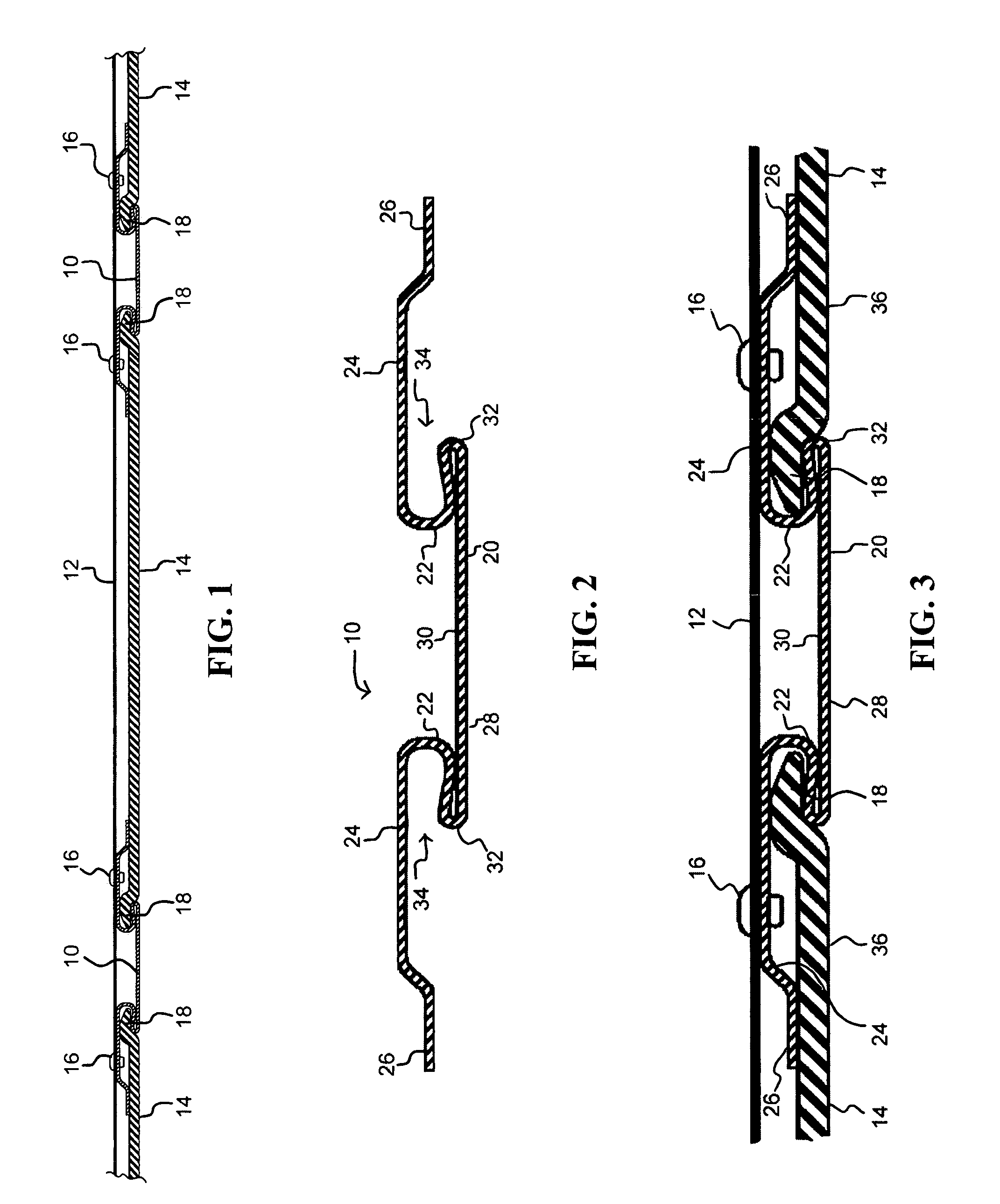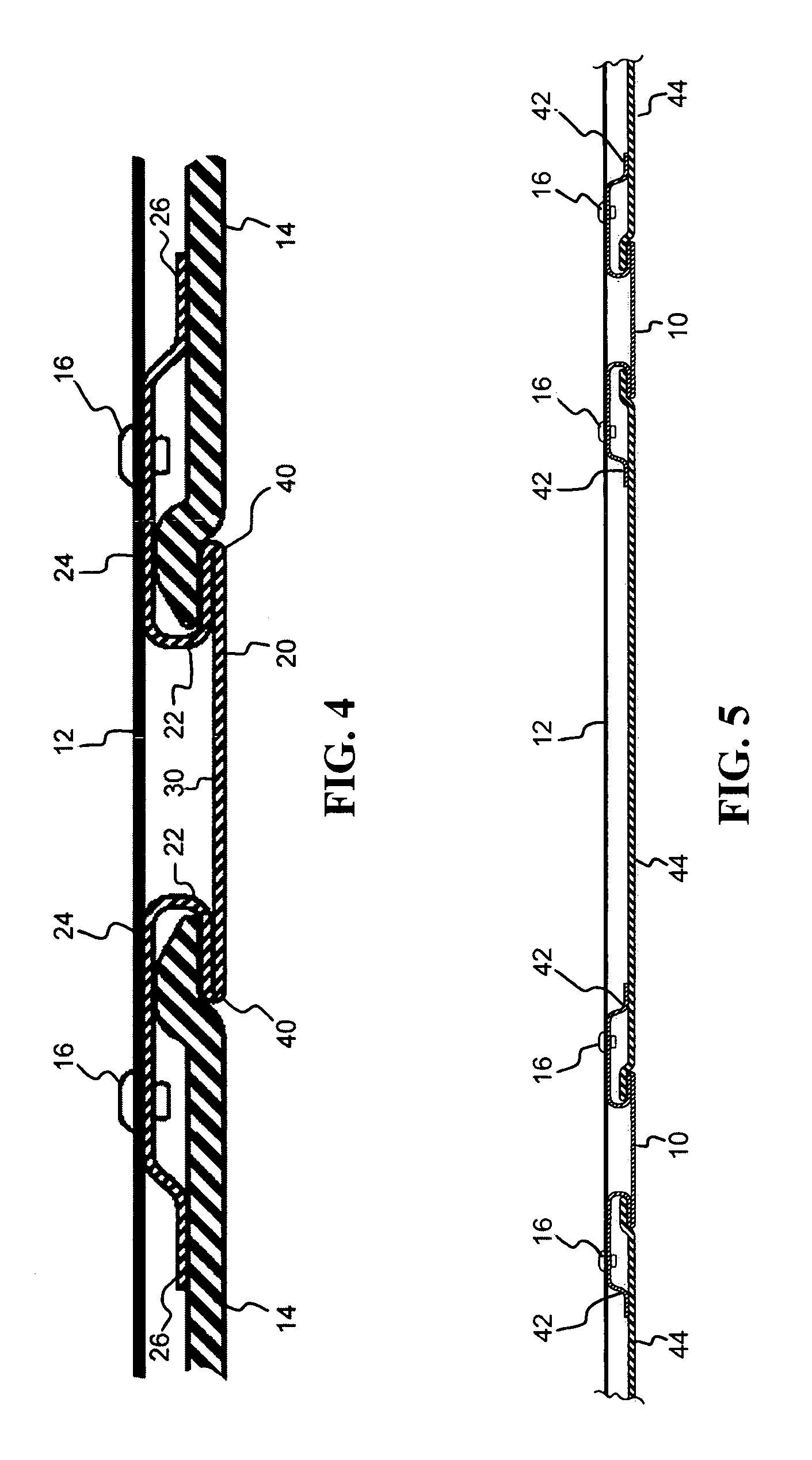Sheet and post container sidewall construction
a sidewall and container technology, applied in the direction of superstructure connections, doors, transportation and packaging, etc., can solve the problems of limiting the exterior dimensions of cargo containers, conventional sheet and post designs, and the thickness of the posts required to provide structural integrity for the trailer, etc., and achieve the effect of low cos
- Summary
- Abstract
- Description
- Claims
- Application Information
AI Technical Summary
Benefits of technology
Problems solved by technology
Method used
Image
Examples
Embodiment Construction
[0035]The present invention may be used with any type of transportable cargo container and is particularly suited for applications requiring a large, lightweight container that is regularly loaded and unloaded by utility vehicles. The improved sidewall construction of the present invention may be used with containers transported by road, rail, sea or air. However, for descriptive purposes, the present invention will be described in use with an over-the-road trailer.
[0036]FIG. 1 shows an improved sheet and post container sidewall construction of the present invention. The basic components of the sheet and post construction are the structural posts 10, the outer protective skin 12 of the trailer and the liners 14. The vertical posts 10 are preferably secured to the outer protective skin 12, (which is typically made of 0.050 inch thick aluminum) with rivets 16. The liners 14 extend between adjacent vertical posts 10 and are inserted at their vertical edges 18 into channels in the posts...
PUM
 Login to View More
Login to View More Abstract
Description
Claims
Application Information
 Login to View More
Login to View More - R&D
- Intellectual Property
- Life Sciences
- Materials
- Tech Scout
- Unparalleled Data Quality
- Higher Quality Content
- 60% Fewer Hallucinations
Browse by: Latest US Patents, China's latest patents, Technical Efficacy Thesaurus, Application Domain, Technology Topic, Popular Technical Reports.
© 2025 PatSnap. All rights reserved.Legal|Privacy policy|Modern Slavery Act Transparency Statement|Sitemap|About US| Contact US: help@patsnap.com



